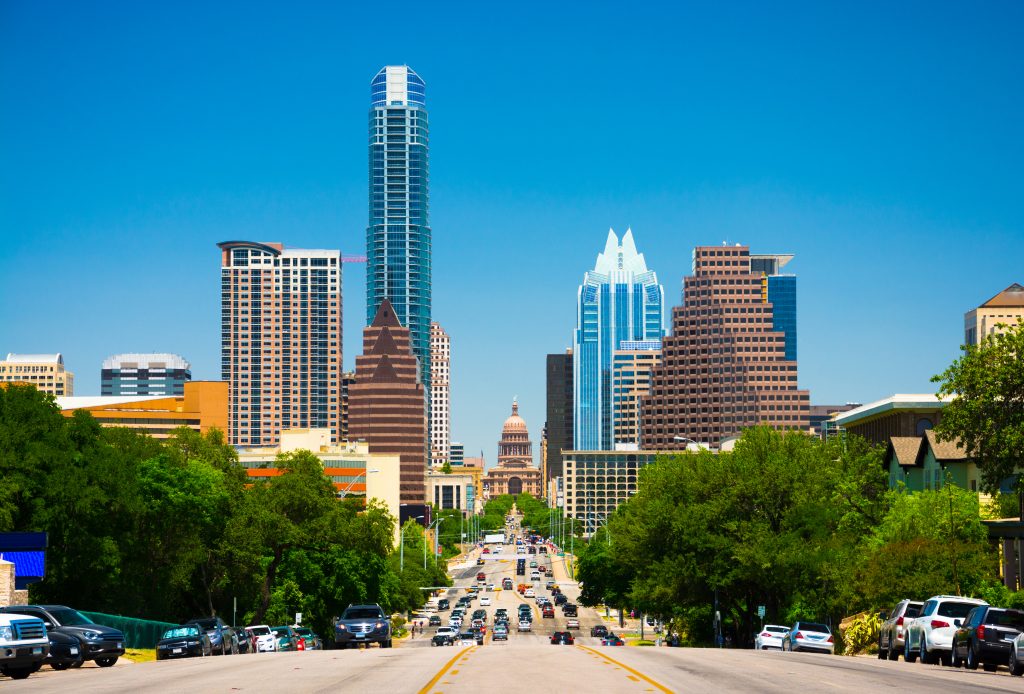
Austin ranks number one as the hottest real estate market in the country, according to the Emerging Trends in Real Estate 2020 report.
PwC US and the Urban Land Institute released the report this week which also included another Texas city: Dallas/Fort Worth, which claimed the sixth spot.
Others in the top ten included Raleigh-Durham at number two, followed by Nashville, Charlotte, 4, Boston, 5, Orlando, 7, Atlanta, 8, Los Angeles, 9, and Seattle, 10.
“What’s interesting is over time, we’ve gone from big coastal gateway cities – and those were the cities year after year for real estate investment – and now they’ve been replaced by smaller, non-gateway cities,” said Mitch Roschelle, PwC Partner and the report’s Co-Publisher.
In the case of Austin, it’s a virtuous cycle of employment growth, population growth, and affordability from a consumer and business standpoint, Roschelle said. But over time, Austin has seen a bit of an uptick of the cost of doing business, he said.
For a long time, Austin’s large growing talent pools in a tight labor market attracted a lot of growth, said John Cummins, partner with PwC, based in Austin.
Austin ranks first for its low taxes, skilled talent pool, economic diversity and high quality of life.
The real estate report finds niche properties “ripe for investment and development include data centers, especially with the implementation of 5G technology and the myriad uses that will go along with it, and medical space due to an aging population, increased number of people with medical insurance, technological advances and cost reduction strategies by insurance companies that favor outpatient care.”
“Multifamily and single-family housing are also highly favored, as housing needs continue to change for millennials and baby boomers,” according to the report. “Less favorable: office space, hotels, and retail, with the latter receiving the lowest ranking.”
The report reveals top trends including Millennials moving to a hipper version of the suburbs, deemed Hipsturbia – populated with art galleries, hip restaurants, and night clubs. People are also seeking out community.
“They are more eclectic than the cookie-cutter suburbs we grew up,” Roschelle said.
And when it comes to office buildings and workplaces, people want amenities including on-site dry cleaning and dinner pick up.
Another trend is sustainability, which the report found is not an exception but an expectation.
And a resurgence of malls as hubs of activity but this time for shared office space. “The built-in amenities of unused space, parking, gym, food and beverage services make the two a natural fit and a win/win for all.”
Other trends include “experiential and entertainment: retail continues the trend of creating spaces with one-of-a-kind activities, such as art, amusements, or food, and push the boundaries supportable in shopping centers like sky diving and skiing.”
The report, now in its 41st year, includes interviews and survey responses from more than 2,200 real estate experts, including investors, fund managers, developers, property companies, lenders, brokers, advisers and consultants.
“The cities in our top ten – several of them are experiencing growing pains because of their population growth,” Roschelle said. “A lot of that growing pain has been satisfied by cranes in the sky and apartments being added and buildings being added.”
And of the cities in the top ten in the report, the catalyst for the growth was government intervention to enable future growth, Roschelle said. For example, Boston did the big dig to connect downtown to an underdevelopment area of South Boston, he said. And Tampa re-did its waterfront area to create a Riverwalk to attract more people and businesses, Roschelle said.
In Austin, city blocks with older buildings are being replaced by 50 story buildings, Cummins said. At some point, that will tap out, he said. Austin must continue to invest in infrastructure projects to keep pace with the growth, Cummins said.
“The question is going to turn towards transportation,” Cummins said. “We really don’t have a good public transport blueprint.”
Correction: Due to a reporting error, a previous version of this article misspelled John Cummins name. We regret the error.
